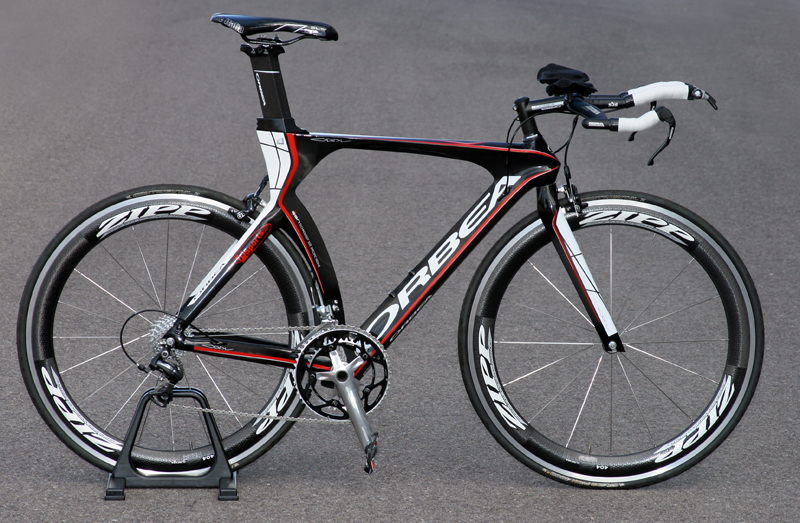By Tom Demerly for TriSports.com
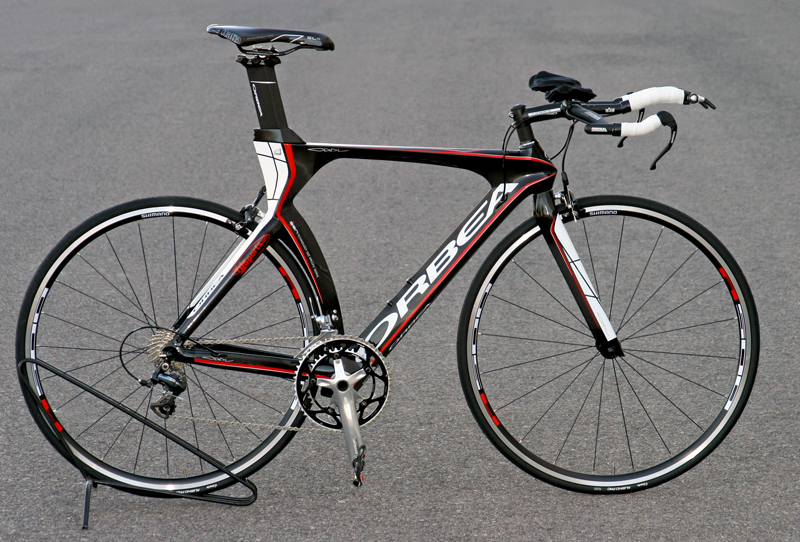
TriSports.com, along with Orbea USA, has released a value-oriented version of the successful Orbea Ordu aerodynamic styled bike with a Shimano Dura-Ace “mix” component group, Shimano wheels, a Profile Design aerodynamic cockpit and Selle Italia saddle. The complete bike package is built on the same frame design used by Craig Alexander to win the Ford Ironman World Championships two times and the 70.3 World Championships.
This version of their successful Ordu bike, based loosely on the professional versions used in both Tour de France time trials and Ironman World Championships, is on sale for $2499.95 from $3499.95.
Orbea was founded in 1847 making it one of the oldest bike brands in the world. The Basque collective company owns an impressive dossier of competitive cycling victories that include their race team Euskaltel-Euskadi’s successes in the Tour de France as well as Alexander’s Ironman victories.
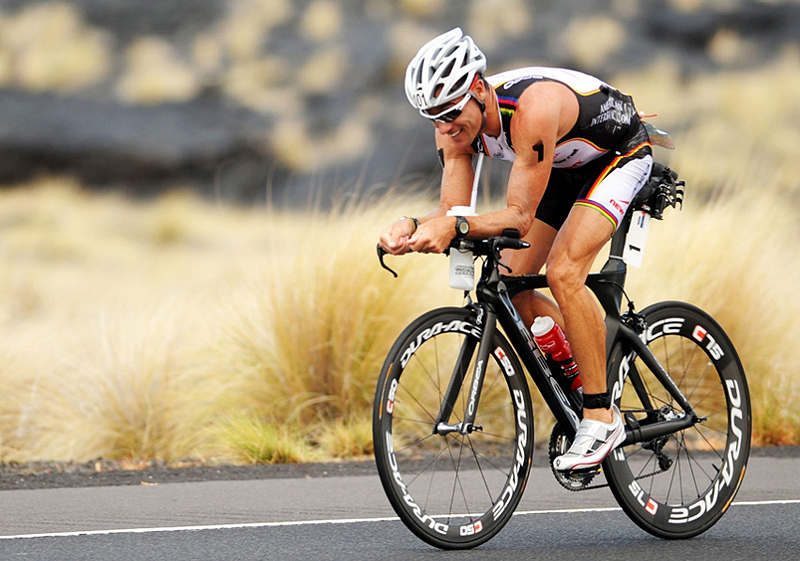
Front to back on the Orbea Ordu Dura-Ace mix bike:
The Profile Design cockpit is reliable and simple. The aerobars and base bars are all 6061 T-6 aluminum. Aerobar extensions are “S” bends bolted to a wing shaped aluminum Profile Design base bar. The aerobar extensions are not adjustable for length but the position of the elbow pads can be varied at their mount points for sizing. The advantage is lighter weight and less hardware compared to an adjustable length aerobar, the drawback is less sizing adjustment. The Profile ZBS S-Bend aerobar is available in three sizes from Profile Design, 225mm, 245mm and 265mm. Most frame sizes in the Orbea Ordu mix are specing the middle-of-the-road 245mm length aerobar. The ZBS bracket is relatively low out of the box and can be adjusted for height using Profile Design’s existing aerobar adjustment hardware available at most Profile Design dealers.

Controls on the Profile Design aero cockpit are very good: Shimano BL-TT78 alloy brake levers with a strong return spring provide snappy braking performance. The shifters are the proven 10-speed Shimano Dura-Ace SL-BS79 index alloy shifter. Expect excellent shifting and braking from these controls. The cockpit is mounted with a very conventional alloy stem that is easily interchanged for accurate sizing and positioning.
The fork on this version of the Orbea Ordu is a bladed, carbon fiber leg, aluminum alloy steer tube with conventional brake mounting. While this is heavier than a carbon fiber steer tube fork it is easier to travel with because of the reliable metal star nut inside the fork steer tube. It also uses easy to work on and more dependable conventional brake mounting. No surprises here- and no problems either. It is classic, dependable, proven design.
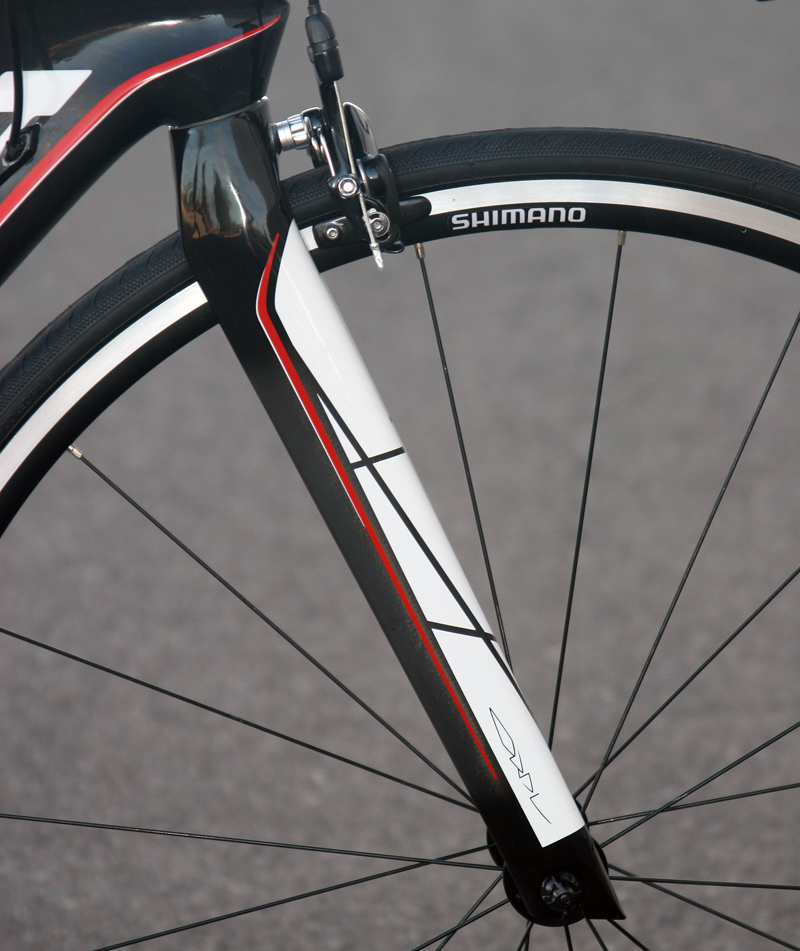
The Ordu uses aerodynamic styling with a conical head tube and blade-shaped down tube. Cable routing enters the frame at the down tube and uses housing the entire length to make installation and cable changes easier and to prevent intrusion of water and road grit. This is a good design for triathletes with poor bike maintenance habits since it keeps the inner brake cable clean over its entire length maintaining good braking performance.

The main frame continues the aero styling theme with a Cervelo-esque curved seat tube fairing in the rear wheel and blade shaped seatstays. There is one water bottle mount on the down tube. Long distance athletes will need an additional hydration system such as a handlbar mounted or rear saddle mount system. Craig Alexander’s Ironman bikes used both an X-Lab rear hydration rig and a Profile Design aero bottle mounted on the aerobars.

Moving up the frame the seatpost binder assembly is one of the most secure we’ve seen. There are three seatpost binder bolts, one in the front and two in the rear. The front bolt is concealed by a shaped rubber plug. Use a torque wrench to snug each of these to 4 Newton meters torque. Unlike some aero seatpost bikes it is almost impossible for this seatpost to slip if your torque settings are accurate. The redundant nature of this design also makes this bike more flight case friendly.
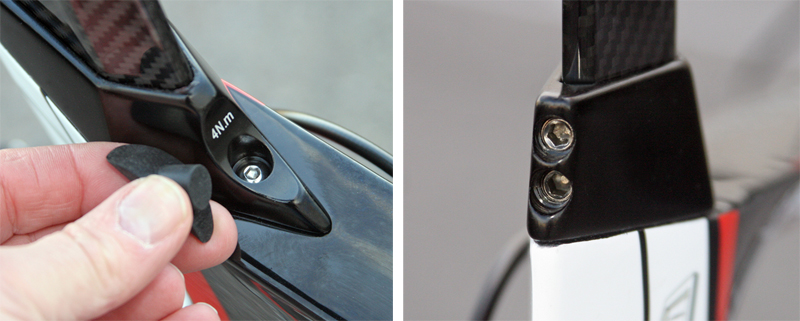
The drivetrain on the Orbea Ordu Dura-Ace mix build is typical of so-called “Dura-Ace mix” bikes. There is just enough Shimano Dura-Ace to use the words “Dura-Ace” and not much more. In the case of this version of the Ordu the rear derailleur is a Shimano Dura-Ace RD-7900-SS, the short cage version of the new mechanical Dura-Ace rear derailleur. This excellent Ironman and Tour de France winning rear derailleur uses a carbon pulley plate, sealed bearings in both the guide pulley and the tension pulley and a cold forged main body for excellent durability. It’s unlikely you can find a better rear derailleur. This derailleur will shift up to a 28 tooth sized large cog from an 11 tooth small cog so you have plenty of capacity for all course profiles including mountains.
The FSA crank is a 130mm bolt pattern turning a 53 tooth large ring and 39 tooth small chainring. The crank is aluminum, not as alluring as some carbon cranks but stiff and dependable. Early versions of these FSA chainrings had a spotty reputation for upshifts from small ring to large. The chainrings on this component kit are a more recent build and provided at least consistent upshifts for us. While not top shelf, they work. We’re spoiled by the incredible front shifting on the new Shimano Dura-Ace hollow-forged cranksets.
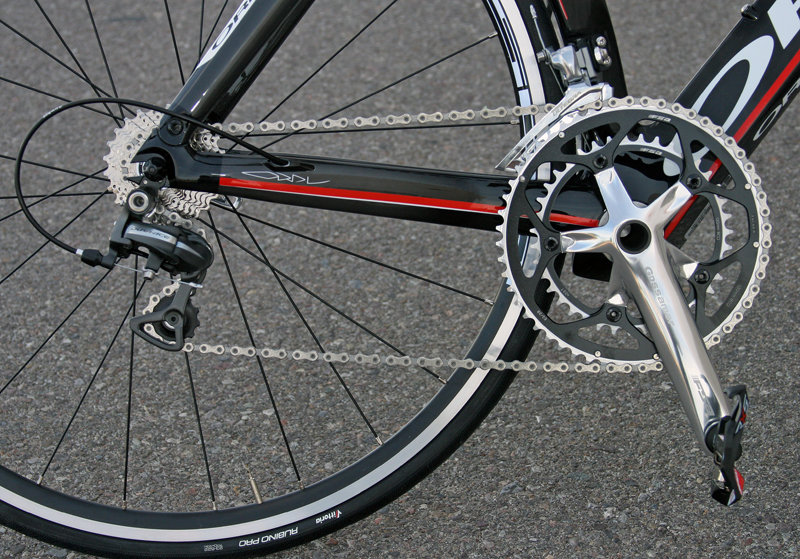
Another owner-friendly spec detail on this build of the Ordu is the truly common bottom bracket. There is no such thing as a “standard” bottom bracket now with a number of manufacturers developing their own bottom bracket format and claiming it will be universally adopted as the next great thing. While we wait for the consensus on what the best bottom bracket format is, and we’ll be waiting a while, the common bottom bracket format on this Orbea build is readily available in bike shops and is easy to service. It is also easy to make a change to an upgraded crank with this bottom bracket format since most other bottom brackets, such as Shimano, simply thread into this frame.
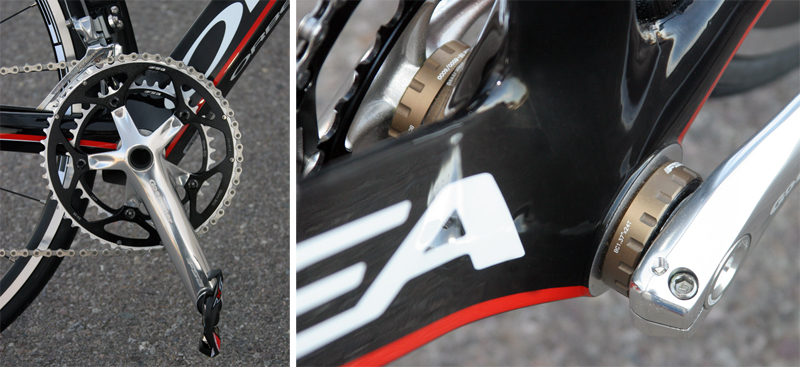
Frame details on the Orbea Ordu make the bike uniquely “ownable”. The rear dropouts, where you remove and replace the rear wheel, are adjustable with a pair of set screws. These allow you to adjust the proximity of the rear tire to the seat tube of the frame allowing for small changes in tire size. The rear-facing dropouts can be a handful for new athletes removing and replacing the rear wheel. This version is at least as good as most rear dropouts and better than some.
The front derailleur mount on the Ordu bolts to the frame, a thoughtful design that allows a bit of tweaking for derailleur angle and replacement in the event of breakage. It’s another thoughtful feature that makes this bike very user-maintainable and durable.
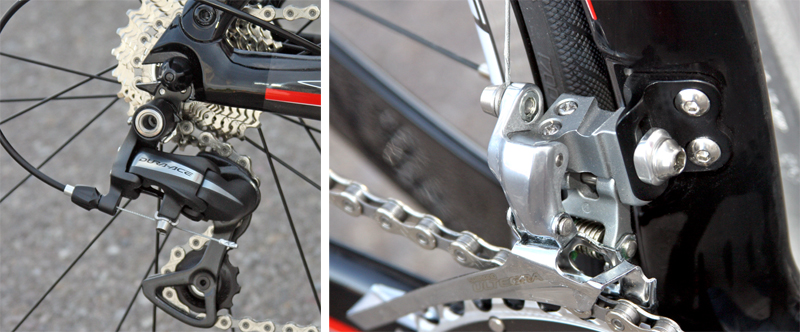
Brake calipers on this build of the Ordu are original equipment manufacturer (OEM) spec alloy calipers with cartridge brake pads and a polymer quick release lever and barrel adjuster. The calipers are OK, but only OK. They feel good when stopping and hold adjustment well but are admittedly value oriented. No sex appeal here, only function.
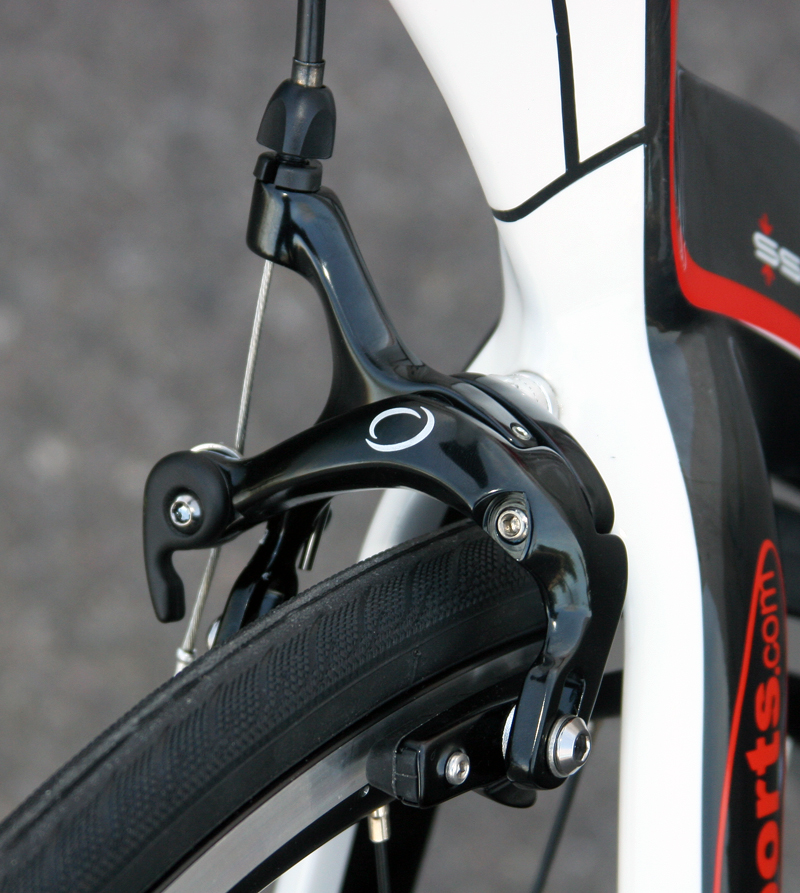
Fit and geometry on the Orbea Ordu provides four frame sizes; 48cm, 51cm, 54cm and 58cm. The variable geometry seatpost has indexing for a 74-degree range effective seat tube angle in the rear mounting position and a 76-degree in the forward seatpost mounting position. The bike comes with an excellent Selle Italia SL T1 triathlon specific saddle that is 27 cm long, standard length for most saddles. The SL T1 has a glossy polymer cover that won’t chafe your inner legs when racing in short trishorts or a swim suit. If you need to sit steeper than 76-degrees effective seat tube angle for a more open, relaxed angle between your thigh and torso at the top of the pedal stroke you can use a longer 30 cm. saddle such as the excellent Profile Design Tri Stryke or Fizik Arione Tri.
The seat clamp on top of the bladed seatpost uses a knurled wheel and Allen bolt for fore/aft and angular adjustment. It is a little fumbly to reach the knurled wheel under the saddle. With saddles that have very deep sides, such as some Cobb Cycling models, it is going to be tricky to reach this adjuster knob.
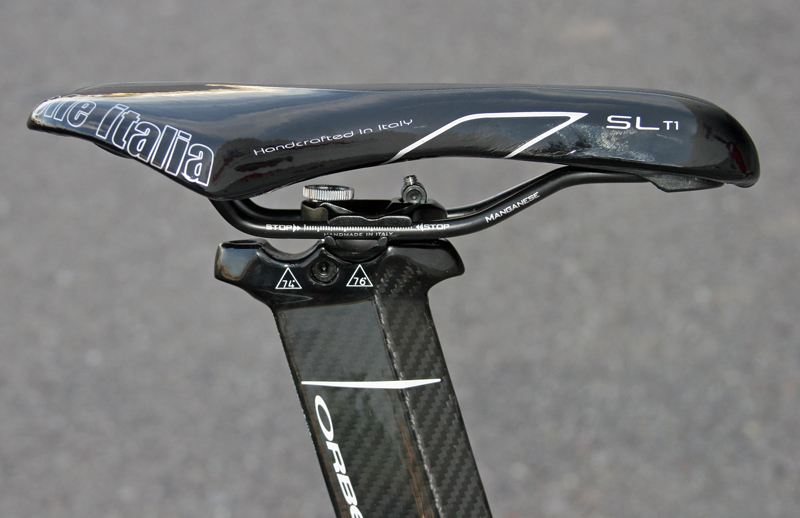
There are two color schemes available in the special buy configuration of the Orbea Ordu, one is predominantly black with silver metallic accents and the other is a traditional red, white and black color palette that matches nearly everything in our sport. Both finishes are executed flawlessly with truly remarkable attention to detail and finish. The paint and graphics work on these bikes is industry best, a refreshing change from some popular triathlon bike brands that seem to subordinate finish quality to nearly everything else.

As a special build for our Orbea Ordu photo shoot we mounted a pair of the 2011 Zipp 404 clincher wheels featured on sale from 2011. The pairing of the Zipp 404 wheels and the Orbea Ordu special build make for a smart buy at reduced prices, especially with the Zipp 404’s which seldom go to discount. This combination rides well and looks great. Add a good bike fitting and you have a lot of performance at a strong discount. If the Ordu fits you it’s a smart way to buy.
